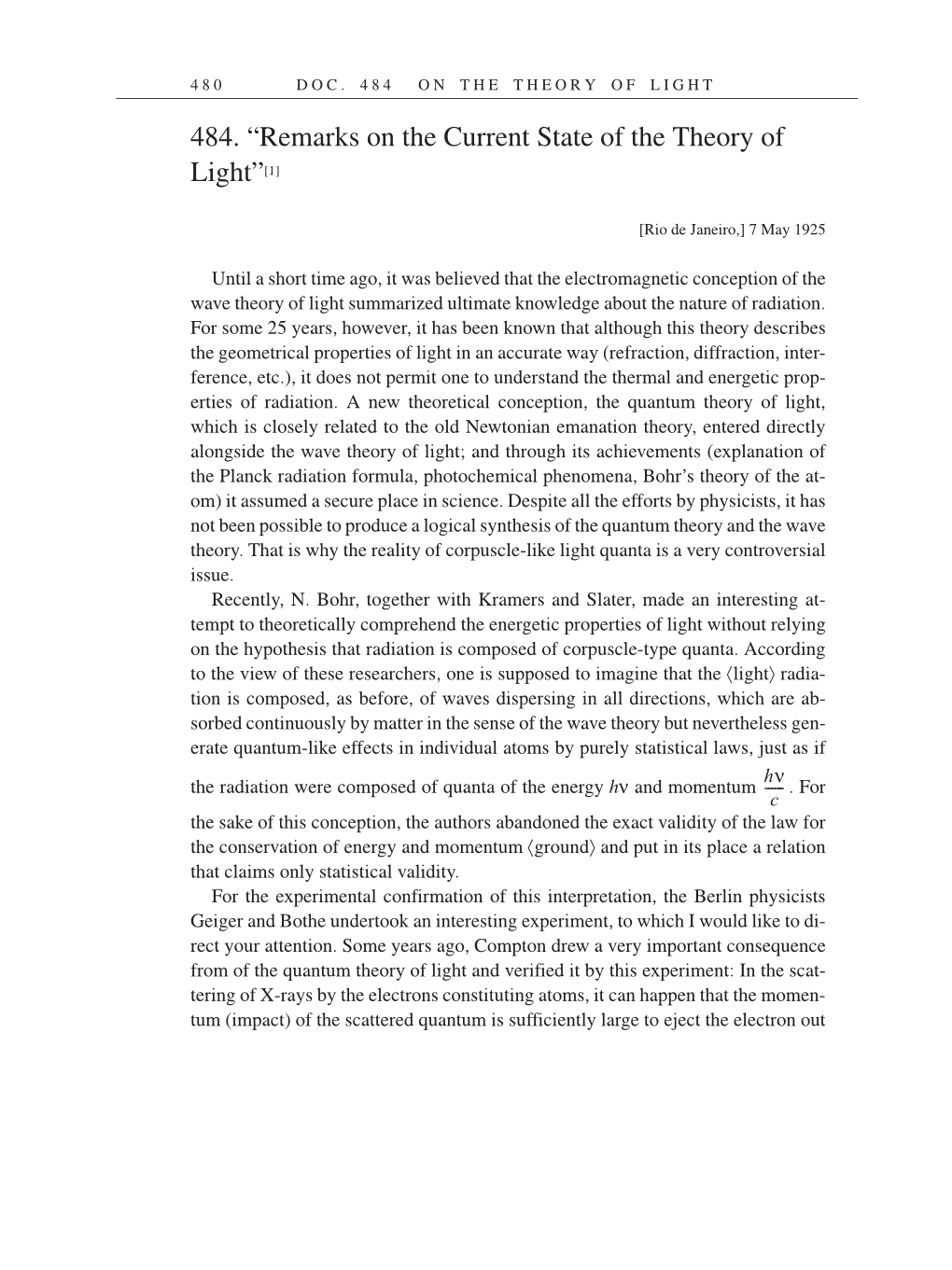4 8 0 D O C . 4 8 4 O N T H E T H E O R Y O F L I G H T
484. “Remarks on the Current State of the Theory of
Light”[1]
[Rio de Janeiro,] 7 May 1925
Until a short time ago, it was believed that the electromagnetic conception of the
wave theory of light summarized ultimate knowledge about the nature of radiation.
For some 25 years, however, it has been known that although this theory describes
the geometrical properties of light in an accurate way (refraction, diffraction, inter-
ference, etc.), it does not permit one to understand the thermal and energetic prop-
erties of radiation. A new theoretical conception, the quantum theory of light,
which is closely related to the old Newtonian emanation theory, entered directly
alongside the wave theory of light; and through its achievements (explanation of
the Planck radiation formula, photochemical phenomena, Bohr’s theory of the at-
om) it assumed a secure place in science. Despite all the efforts by physicists, it has
not been possible to produce a logical synthesis of the quantum theory and the wave
theory. That is why the reality of corpuscle-like light quanta is a very controversial
issue.
Recently, N. Bohr, together with Kramers and Slater, made an interesting at-
tempt to theoretically comprehend the energetic properties of light without relying
on the hypothesis that radiation is composed of corpuscle-type quanta. According
to the view of these researchers, one is supposed to imagine that the ¢light² radia-
tion is composed, as before, of waves dispersing in all directions, which are ab-
sorbed continuously by matter in the sense of the wave theory but nevertheless gen-
erate quantum-like effects in individual atoms by purely statistical laws, just as if
the radiation were composed of quanta of the energy hν and momentum . For
the sake of this conception, the authors abandoned the exact validity of the law for
the conservation of energy and momentum ¢ground² and put in its place a relation
that claims only statistical validity.
For the experimental confirmation of this interpretation, the Berlin physicists
Geiger and Bothe undertook an interesting experiment, to which I would like to di-
rect your attention. Some years ago, Compton drew a very important consequence
from of the quantum theory of light and verified it by this experiment: In the scat-
tering of X-rays by the electrons constituting atoms, it can happen that the momen-
tum (impact) of the scattered quantum is sufficiently large to eject the electron out
hν
c
----- -
